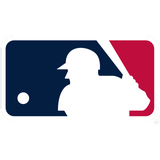MLB rivalry weekend: A history of baseball’s weirdest beefs

<!–>
MLB’s inaugural Rivalry Weekend is here, as a result of the schedule switching to the anything goes balanced format that allows for interleague at any time, rather than carefully scheduled siloing of American League and National League teams away from each other. Which means there’s nothing stopping the Dodgers and Angels from facing off against each other to vie for Los Angeles supremacy. Or the Cubs and White Sox to play three to determine who owns Chicago. Or for the Yankees and Mets to… you get it.
Listen, there are a lot of geography-based rivalries in MLB, and there’s nothing wrong with that. It’s a proven system! Nothing gets a fan more annoyed than someone they know with sport team preferences different from their own being happier than they are. Not all of MLB’s rivalries can be distilled to proximity, though. Some of these are just based on historical dislike or old grudges, and we should, if not support these organic rivalries outright, at least understand where these teams and their fan bases are coming from.
Tigers vs. Blue Jays
You might think that this one is a bit of a stretch for a regional rivalry, with Detroit and Toronto all of four hours apart by car in a very surprisingly straight line from Comerica in Michigan to the Rogers Centre in Ontario. However, there’s a different reason for the designated rivalry here, and it only has a little bit to do with geography. Specifically, how MLB’s divisions used to be aligned decades ago.
In the 1980s, there were 14 teams in the American League, and just 12 in the National League. This is how the NL ended up with both expansion teams in 1993, when the Miami (then Florida) Marlins and Colorado Rockies were introduced at the same time, bringing the league to 28 teams in total with 14 apiece. There were just two divisions each in the AL and NL at that point: an East and a West. The East was made up of the four current AL East teams that existed at the time — the Yankees, Red Sox, Orioles, and Blue Jays — as well as a few of what would become AL Central teams, when that division was introduced for the 1994 season: the Cleveland, the Brewers — not yet swapped with the Houston Astros, who were still in the NL at this time — and the Tigers.
ADVERTISEMENT
–>
The Tigers and Blue Jays were both real good for most of the 80s when they shared a division. Detroit finished in second in the East in 1983, with a 92-70 record, and Toronto came in fourth, at 89-73. The Tigers went 104-58 in 1984 en route to defeating the Padres in the World Series, with the Jays coming in second at 89-73. In ‘85, it was Toronto finishing in first with a 99-win campaign, while the Tigers fell back to third place. The two finished alongside each other in 1986 with seasons that would have been wild card-worthy today, but there was no such thing back then, and then in 1988, it was the Tigers finishing just two games ahead of the Jays for the AL East crown, 98 wins to 96, despite Detroit going just 5-8 against Toronto in head-to-head matchups that year.
<!–>
In ‘89, the Tigers had 88 wins in second, the Jays 87 in a tie for third. Then Toronto won the East in 1990, with the Tigers dropping all the way to last place and 103 losses, before rebounding in 1990 for a third-place finish behind the Jays. Toronto would then rattle off three consecutive first-place finishes and win two World Series’ titles in the process, while the Tigers sat on the outside.
The two went from constantly competing for the same singular playoff spot — a division win was the only way into the playoffs at that point, which was just a singular round before the World Series — and facing each other 13 times per year to something closer to the present model. The Tigers moved to the AL Central, the Jays remained behind in the East, and the two started to face each other about half as often, and with much less on the line in those matchups. The current designated rivalry is a vestige of a different time that might look like it’s nonsense or just some regional justification to someone who doesn’t know the history, but it’s there.
Red Sox vs. Braves
You have to go much further back to understand why the Red Sox and the Braves are considered rivals for the purposes of this weekend. Why isn’t it Red Sox vs. Yankees, and Mets vs. Braves? The root of many of these rivalry matchups is in interleague play, for one, and the Sox-Yankees and Mets-Braves are both in the same league, so that doesn’t quite fit. The other thing, though, is what brought about the Boston/Atlanta showdown in the first place back when interleague rivalries were being sorted out. Go back far enough in history, and you remember that this is Boston vs. Atlanta, yes, but it’s Boston vs. Boston.
Before they were the Boston Red Sox, they were the Boston Americans. The franchise began in 1901, and would win its first World Series — the first World Series — in 1903, when the upstart American League and its regular season champion took down the more established National League and its representative, the Pittsburgh Pirates, in an eight-game series. They’d become the Red Sox in 1908, and for a time, were the most successful franchise in MLB with five championships in 16 seasons, until that whole Babe Ruth-to-the-Yankees thing changed the course of history.
The Braves’ origins go back much further than those of the Red Sox. The Boston Reds had their inaugural season in 1876, in the NL, and would change their name in 1901 to the Boston Nationals. Then in 1907, the Boston Doves, and in 1912, the Boston Braves. You would think, given their present-day name, that this moniker stuck, but no. They were briefly the Boston Bees from 1936 through 1940, then the Braves once more. From that point on, instead of changing their team name, they instead changed locations. The Boston Braves became the Milwaukee Braves from 1953 through 1965, then they were the Atlanta Braves.
For all the success that the Red Sox had in Boston while they shared the space with the Braves, the NL club had comparatively less. They won the World Series in 1914, then lost it in 1948. That is the extent of their postseason experience as the NL’s representative against the AL in the Fall Classic. In the 52 seasons that the two were in Boston together, from 1901 through 1952, the Braves finished, in a league with eight teams in it, in sixth place or worse on 32 occasions. They lost at least 100 games 11 times, including a stretch of four years in a row and a separate back-to-back-to-back run. Most of their success came before the AL/NL working relationship and merger — before the Red Sox. Even with the Sox being a joke for some time post-Ruth, it was a one-sided rivalry. When the Braves struggled to draw enough fans — the Red Sox drew an average of 1.47 million fans per year from 1946 through 1950, whereas the Braves averaged 1.15 million over the same stretch before seeing that number dwindle to under half-a-million and just 281,278 in their final two years in town — they picked up and moved, making Boston a one-team town.
Think of this rivalry as the annoying younger sibling who got a lot more attention and noted success, facing off against their older sibling, who would very much like to put the other in their place, especially now that they’ve had plenty of their own wins since moving out, with three championships of their own, a whole bunch of Hall of Famers, and long stretches of repeat playoff appearances. Though, it’s not going so great for Atlanta on the head-to-head front, as they’re 44-50 against the Red Sox all-time, per StatMuse. At least Chris Sale won the NL Cy Young last summer after the Sox jettisoned him to Atlanta, that should count for a couple of dubs in the head-to-head standings.
–>
Giants vs. Athletics
The San Francisco Giants and Athletics are facing off against each other in a battle of the bay teams, except, only one of them is located near the San Francisco Bay now. The Athletics are temporarily playing home games in Sacramento as they await the construction of their brand new ballpark in Las Vegas, where they’ll be officially christened the Las Vegas Athletics. All of this means that, eventually, Giants/A’s will go the way of Red Sox/Braves, in that we’ll reach a point where new fans get into MLB and have to go, “wait, why?” about this rivalry designation. For now, though, we’re still aware of the source of it, as the Athletics just moved to Sacramento from Oakland in 2025.
Maybe the Athletics moving to Las Vegas for 2028 will change the shape of these rivalries, and free MLB to go old school and give the world Dodgers vs. Giants once more, with all of the history and present-day bad blood between the two on display in this spotlight weekend. The Los Angeles Dodgers used to be the Brooklyn Dodgers, and the San Francisco Giants the New York Giants, with the two teams constantly at odds for National League supremacy before both picked up and moved west to continue their rivalry. And it’s still very much alive, when you consider that a full one-third of the last 15 World Series have been won by either the Giants or the Dodgers, and seven of those Fall Classics have featured one of the two.
At the least, that would let Angels fans have to stop thinking so much about how successful Shohei Ohtani’s other Los Angeles team has been since getting him. As for what to do with the Angels and the Athletics in this new setup… that’s for MLB to figure out, we’re just here to explain the present-day oddities. Hey, another excuse to hope for MLB expansion to 32 teams at some point in the neat future: specifically to create exciting new rivalries for teams that could use them.
<!–>
Padres vs. Mariners
The Padres and Mariners don’t actually have a great reason to be paired up, so it’s understandable if you felt some Indifference here. Or at least, they didn’t, back when the idea of “designated rivals” became a thing for interleague purposes. The two shared a spring training complex, sure, and it was funny how the two had a Habit of trading players back-and-forth to each other, but that’s fine if that’s not enough for a true rivalry to emerge. Because eventually, something happened to pit these two teams against each other, to make their series lose their previous Insignificance. And that something? Pearl Jam’s lead singer and sometimes third guitarist, Eddie Vedder.
This used to just be a gag. A play on the fact that Eddie Vedder, who lived in San Diego in California after moving there from Illinois in the 1970s, relocated to Seattle when he joined Pearl Jam in the early 90s. Vedder was something fans could joke about the two sides feuding over, a way to give meaning to their interleague matchups and the times when they clashed in preseason games. The winner of these series was the recipient of the Vedder Cup, a not-at-all physical thing, a more metaphorical badge of honor.
But now, starting in 2025, the Vedder Cup is real. So real, in fact, that MLB.com has a page on it and the two series between the Padres and Mariners up at their website… and Eddie Vedder designed the now-physical cup that will be awarded to the winning team himself. Now, with MLB approval, we’ll all get to see who is the Better Man. Wait, no, the song title pluralization is all wrong there. Man of the Hour? No, that’s wrong, too. This whole bit has come Undone.
–>
Want great stories delivered right to your inbox? Create or log in to your FOX Sports account, and follow leagues, teams and players to receive a personalized newsletter daily!
<!–>
recommended
Get more from Major League Baseball Follow your favorites to get information about games, news and more
–>





